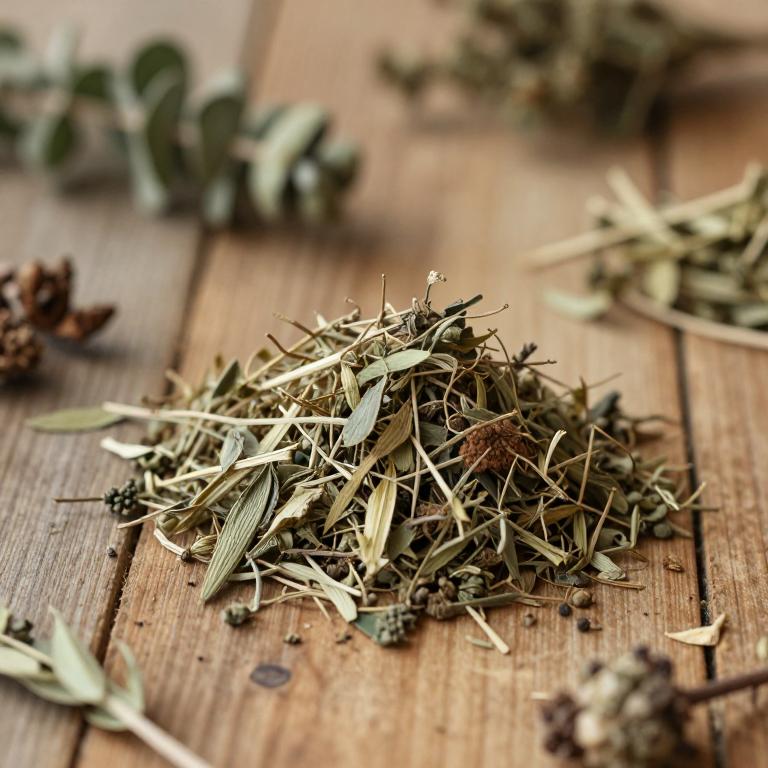Archangelica (Angelica Archangelica)
Information Reliability Score: 5/10
This score reflects the overall reliability of the information presented in this article. It is based on the quality of scientific evidence, accuracy of sources, and the transparency of references related to Angelica archangelica.

Archangelica, scientifically known as Angelica archangelica, is a medicinal herb renowned for its adaptogenic properties and use as both a spice and a traditional remedy.
Native to the colder regions of Europe and Asia, it has been valued for centuries for its ability to support the body's stress response and promote overall vitality. The plant is rich in volatile oils, including a unique compound called linalool, which contributes to its distinctive, slightly sweet and licorice-like flavor. Historically, it was used in medieval Europe to treat ailments ranging from digestive issues to respiratory infections, and it was even believed to ward off evil spirits.
In modern wellness practices, archangelica is often used in herbal teas, tinctures, and supplements to support digestion, reduce inflammation, and enhance immune function.
FREE CHECKLIST
The Only 10 Herbs You Need to Heal 90% of Common Ailments.

Table of Contents
Scientific and Botanical Profile
Archangelica, with botanical name Angelica archangelica, is a biennial or perennial herb native to Northern Europe, Scandinavia, Baltic Countries, Eastern Europe, Russia, Great Britain, Northern Germany, and Poland.
Belonging to the Apiaceae family, it is known by various common names including Garden Angelica, Giant Hogweed, Common Angelica, European Angelica, Wild Angelica, Giant Angelica, Old Man's Beard, Angelica Root, and Sweet Angelica. The plant is characterized by its tall, hollow stems that can reach up to 2 meters in height, with large, compound leaves that are deeply lobed and often covered in fine hairs.
Its flowers form dense, umbrella-like clusters (umbels) of small white or greenish-white blooms, which attract pollinators, while its aromatic, fleshy roots are valued in traditional medicine and culinary applications.
History and Cultural Relevance
Archangelica was used by ancient civilizations such as the Greeks, Romans, and Slavic peoples for its purported medicinal and spiritual properties.
In traditional medicine systems, it was valued for its ability to treat digestive issues, respiratory ailments, and even as an aphrodisiac, with its roots and seeds often employed in herbal remedies. The plant also held cultural significance, with rituals involving its use in purification ceremonies and as a protective charm against evil spirits, particularly in Eastern European folklore. Today, its essential oil is still used in aromatherapy for its calming effects, and its roots are incorporated into modern herbal supplements for digestive support and anti-inflammatory benefits.
Overall, Archangelica remains a symbol of both healing and mysticism, bridging ancient traditions with contemporary wellness practices.
Chemical Composition and Nutritional Profile
Archangelica contains a complex array of bioactive compounds, including alkaloids such as ligustilide and archangelica acid, along with flavonoids, essential oils rich in monoterpenes and sesquiterpenes, and various phenolic compounds.
It is also a good source of vitamins like vitamin C, vitamin A, and several B-complex vitamins, as well as minerals such as potassium, calcium, magnesium, and iron. The plant's nutritional profile is further enhanced by its high antioxidant content, which helps neutralize free radicals and reduce oxidative stress in the body. These compounds work synergistically to support digestive health, reduce inflammation, and promote detoxification by stimulating bile production and enhancing liver function.
The essential oils and alkaloids also contribute to its traditional use in treating respiratory and gastrointestinal ailments.
Medicinal Properties and Health Benefits
Angelica archangelica has long been revered for its potent medicinal properties, offering a wide range of health benefits that span multiple body systems.
It is particularly known for its powerful effects on the respiratory, digestive, and circulatory systems, helping to alleviate coughs, improve digestion, and enhance blood circulation. Its high concentration of essential oils, such as茴香脑 and limonene, contributes to its ability to act as a natural decongestant and anti-inflammatory agent. Compared to similar herbs like ginger or fennel, angelica archangelica stands out for its stronger potency and broader therapeutic spectrum, making it a preferred choice for more severe conditions.
Additionally, its use in traditional medicine highlights its unique advantages in supporting immune function and promoting overall wellness.
Discover the 10 best health benefits of Archangelica.
Forms, Preparation and Usage
Angelica archangelica has a variety of forms available, including fresh roots and leaves, dried roots, tinctures, powdered extracts, essential oils, and capsules, allowing for versatile use depending on the desired application.
It can be prepared as a tea by steeping dried roots in hot water, or as a decoction by boiling the roots for a longer period to extract more potent compounds. For topical use, the essential oil or powdered form can be applied directly to the skin, often diluted with a carrier oil for sensitive areas. The recommended dosage for adults is typically 200-400 mg of standardized extract per day, while children should only use it under medical supervision due to its potent nature.
Due to its strong effects, it is advised to use angelica archangelica sparingly, with a short duration of treatment unless otherwise directed by a healthcare professional.
Safety, Side Effects and Contraindications
Angelica archangelica can be a potent medicinal plant used for its purported benefits in digestive and respiratory health, but it requires careful consideration due to its potential risks.
While generally considered safe in small doses for short-term use, it may cause side effects such as gastrointestinal upset, nausea, vomiting, and allergic reactions in some individuals. It should be avoided during pregnancy and breastfeeding due to its potential to stimulate uterine contractions and affect fetal development, as well as its possible transfer through breast milk. Angelica archangelica may interact with medications like blood thinners, anticoagulants, and sedatives, increasing the risk of bleeding or drowsiness.
For safe use, it is advisable to consult a healthcare provider before use, especially for individuals with chronic illnesses, and to follow recommended dosages to minimize adverse effects.
Growing, Harvesting and Storage
Angelica archangelica grows best in cool, temperate climates with well-drained, fertile soil that is rich in organic matter and slightly acidic to neutral in pH.
It thrives in full sun to partial shade, requiring consistent moisture without becoming waterlogged, and benefits from regular watering during dry periods. To ensure optimal growth, it should be planted in early spring, and mulching helps retain soil moisture and suppress weeds. Harvesting is best done in late summer to early autumn when the roots are most potent, using a sharp spade to carefully dig up the entire plant, ensuring minimal damage to the roots.
After harvesting, the roots should be thoroughly dried in a cool, dark, and well-ventilated area, then stored in airtight containers in a cool, dry place to preserve their medicinal potency and extend their shelf life.